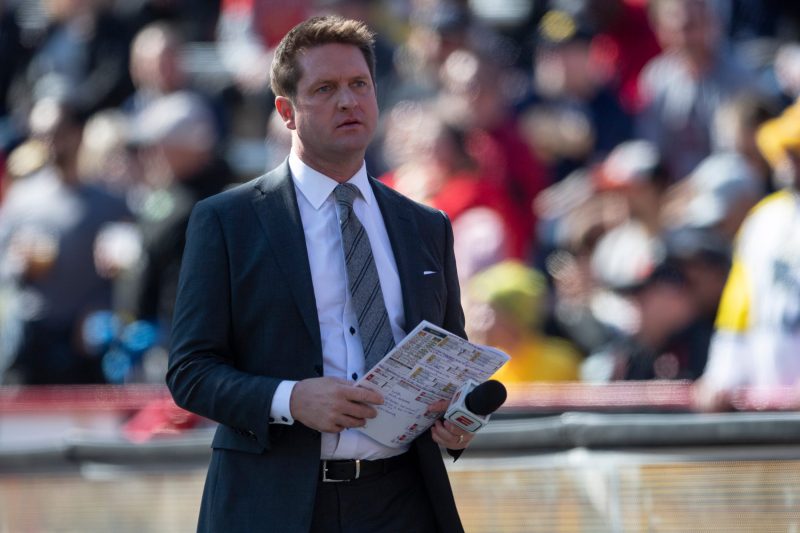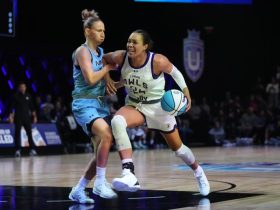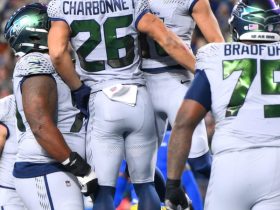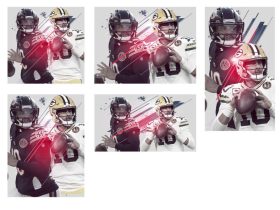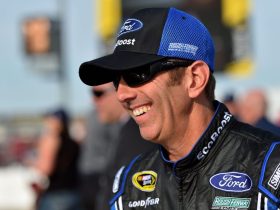No one could have predicted Shedeur Sanders lasting until in the fifth round of the NFL draft. Not even the media’s draft experts who are devoted to the year-round process that defines a considerable portion of the league’s offseason schedule.
So how did the disconnect form between reality – Sanders was taken as the sixth quarterback of the class at No. 144 overall – and the forecast that he was a first- or second-round pick?
A combination of unique circumstances, starting with who Sanders is – the son of Hall of Fame player Deion Sanders, who was his college coach – ultimately “clouded the projection,” NFL draft analyst for The Athletic Dane Brugler said, for “those of us on the outside” of the NFL and those employed by a team.
“Teams thought he could have gone in the top 40 and that would have not been surprising at all,” Brugler told USA TODAY Sports.
Instead, the opposite occurred, leading to the same reaction: surprise.
“Around the league, people were shocked,” ESPN draft analyst Matt Miller said. “No one that I talked to expected it.”
“No one foresaw or had a premonition of fifth round, but most people in the league thought it was very likely he wouldn’t be a first-round pick,” The Ringer draft expert Todd McShay said. “A lot of people in the league had second-round grades on him. Some people in the league I talked to had mid-late first-round grades on him. Typically, the demand is a lot higher than the supply, and it was again this year.”
Miller has one theory behind the disconnect. Top-tier decision-makers, such as a general manager, head coach or owner had a different perspective than an area scout or college scouting director.
“I think that’s where the difference in opinions really came from, was from those top-end decision-makers,” Miller said.
Many teams assumed others had first-round grades on Sanders.
“I just think every team thought someone else would do it,” Miller said.
But grades, Miller added, are based only upon what an analyst knows.
How did the NFL react to Shedeur Sanders’ fall?
Going back to December, Brugler had a feeling Sanders would be a top-40 to top-50 pick – not top five, like many in the online and social media discourse continued spouting.
“I fought this battle all fall, because a lot of people were saying, ‘Oh he’s top five.’ And I was kind of saying, ‘The vibe I get from teams is late one, early two, top-40-type pick,” Brugler said.
Quarterback desperation is real, however. The New York Giants could have taken a quarterback at No. 3 overall and nobody in the league would have batted an eye. But then the question became, if Sanders doesn’t go three or 21 to the Pittsburgh Steelers, is he going to fall out of the first round? In the days before the first round, that answer clearly became “yes.”
Still, Miller had Sanders pegged to the Steelers in his final mock draft but didn’t feel good about it; he couldn’t find one team that had a first-round grade on Sanders.
As the draft played out and the Browns took Dillon Gabriel with the 94th overall pick in Round 3, both the media and those in the league played the same game of connect the dots, Brugler said. The Steelers were still the most logical fit.
“There was a lot of intrigue both from a fan interest and from a 32-team interest of ‘Where’s he going to fall?’” Brugler said.
A shrinking pool and imperfect interviews
Unknowingly, Sanders fell into a shrinking pool of teams that it made sense for him to fall to, McShay said.
For one, not every team needs a quarterback. That at least halves the number of potential landing spots from the grand total of 32. Not every one of the remaining teams used the draft to address the quarterback position, shrinking the pool again. Then, the teams picking quarterbacks rated other quarterbacks higher. The number of teams available to Sanders, McShay said, went from “six to four to two to one.”
“He shrunk the pool down to Cleveland, and he didn’t even know it at the time.” McShay said.
And once there is a limited pool, Brugler said, different teams don’t jump in the water because they haven’t done the due diligence on a prospect such as Sanders, because he’s a quarterback. For example, the Philadelphia Eagles aren’t doing a lengthy combine interview or private workout with Sanders.
That’s why many in the league thought he’d end up with the Steelers, Brugler said, as his meeting with head coach Mike Tomlin had gone well, per multiple reports.
“Once you got to day three, it was anybody’s guess,” Brugler said.
McShay tried sounding the alarm after he heard from multiple people at the scouting combine in Indianapolis in late February that Sanders had subpar interviews with teams.
“It was conveyed to me, essentially, that they got the sense that Shedeur did not care an awful lot about what that organization thought of him,” McShay said. “Nothing was disrespectful. There wasn’t foul language. Nothing got confrontational. Just didn’t take it seriously.”
That’s a departure from the way a typical prospect might comport himself during interviews with teams. But Sanders was not a typical prospect.
“It really stands out,” McShay said.
McShay understands his place in the draft media ecosystem and knows he isn’t the “breaking news guy,” he said. He figured that if he’d heard about Sanders’ interviews twice, from two teams in the top 10 in need of quarterbacks (at that point in the offseason there were six), a network insider would go report it.
“It didn’t play to my sensibilities that anyone in any job interview situation wouldn’t put their best foot forward,” McShay said.
All he heard instead were largely glowing reviews, “all positive things,” McShay said.
“The important stuff behind the scenes was not accurately being reflected,” he added.
McShay said he tried to work with his executive producer, Conor Nevins, about how to report it in his post-combine shows. He recognized the nugget would come with backlash.
“At the end of the day, I was trying to warn everyone for months, dating back to the first week in March, so for two months,’ McShay said. ‘I still wouldn’t believe that he would fall to the fifth round, I don’t think anyone saw that coming.”
Spring matters – advice from agents might matter more
If anything, Miller said he hopes everything about the chasm between Sanders’ pre-draft coverage and the quarterback’s fall can inform fans of the process.
“Fans expect us to have all the information when the season ends in December,” Miller said. “So much happens throughout the process. Teams aren’t even making decisions sometimes until the week of the draft.”
Miller pitched fans on letting the offseason calendar play out because tentpole events like the combine matter and influence what happens on draft weekend.
Miller, McShay, Brugler and other marquee draft analysts such as ESPN’s Mel Kiper Jr. and NFL Network’s Daniel Jeremiah, are only one person – “a one-man scouting department,” as Miller put it.
“Opposed to NFL teams who have tons and tons of people to do that, to gather information and further break things down with the access to the player and medicals and things like that,” Miller said.
The antennas for Miller first went up when Sanders didn’t perform in workouts at the East-West Shrine Bowl in January, although he lacked an injury-related excuse.
“I think that’s when teams started getting a little bit (annoyed),” Miller said, “it was like ‘OK, you’re circumnavigating the rules and the process that we’ve set up.’”
During the combine, Miller said he caught heat after appearing on “NFL Live” and saying Sanders should be throwing in front of scouts and executives. Teams respect the process and want the same from the prospects.
“I think where the Sanders family made a mistake was in assuming Shedeur would also be a top three pick,” Miller said. “Shedeur needed to prove himself and instead he sat out the process.”
To Brugler, only one quarterback actually had leverage in this year’s class: Cam Ward, the first overall pick to the Tennessee Titans.
“It’s a job interview,” Brugler said of Sanders’ pre-draft interviews. “It’s not a recruiting trip. It’s a job interview. And it didn’t sound like he treated it as such.”
After Gabriel was drafted before Sanders, Brugler wrote on social media about the importance of spring for quarterbacks in the draft.
“What you do on tape, it matters, but above all, it’s an intangible position,” Brugler said. “If you don’t win over teams during the interview process, it’s going to be a long haul for you. Part of this, I don’t even blame Shedeur, I just don’t think he had good advice.”
Not having an agent didn’t help Sanders either, both Miller and Brugler said.
“I don’t want to sound like we’re just banging on Shedeur. Because I think a big part of it was not having the right advice around him,” Brugler said. “Agents don’t get enough credit for how they’re able to – it’s not just the training for the combine and stuff, it’s the media training, it’s the team interview training, it’s guiding and putting them on the right path.
“It just didn’t seem like he had the right people around him to do that. So I don’t want to put it all on Shedeur as if it’s a hundred percent his fault he fell as far as he did.”
All the NFL news on and off the field. Sign up for USA TODAY’s 4th and Monday newsletter.

